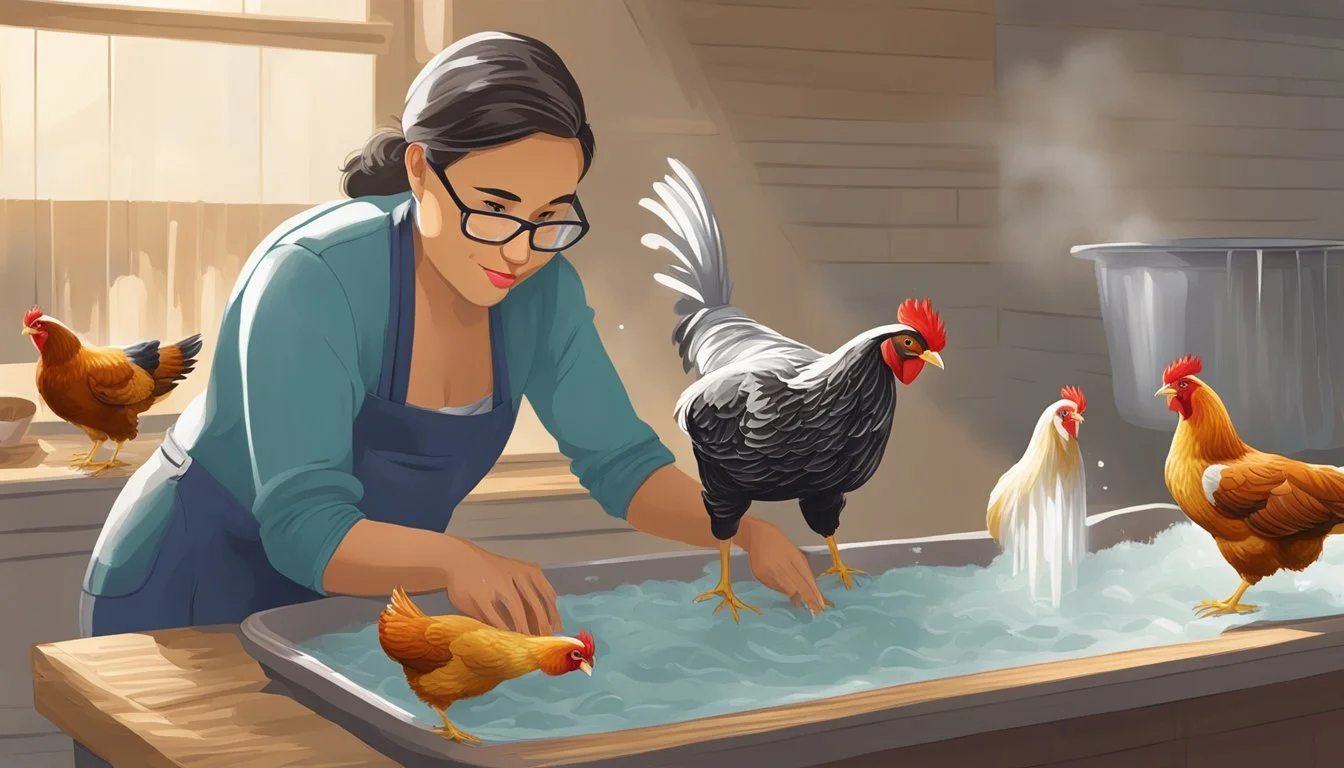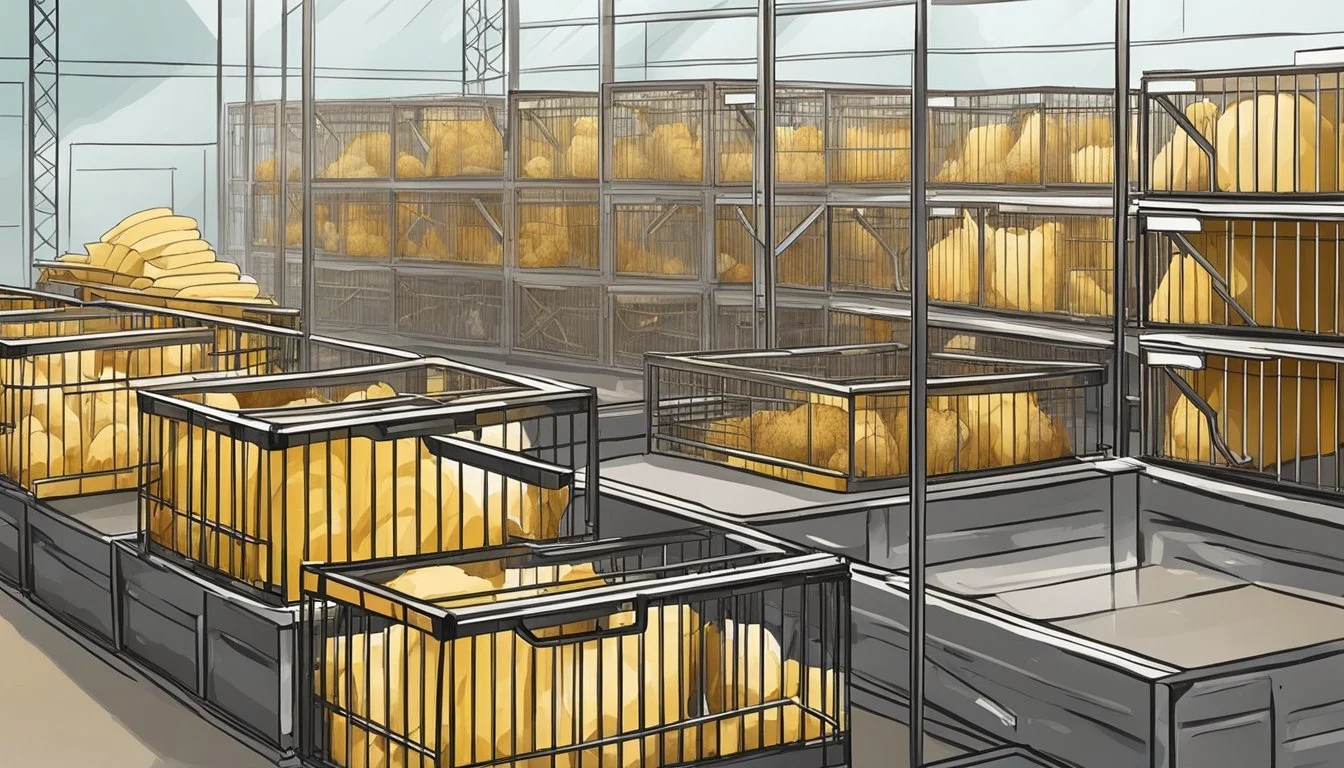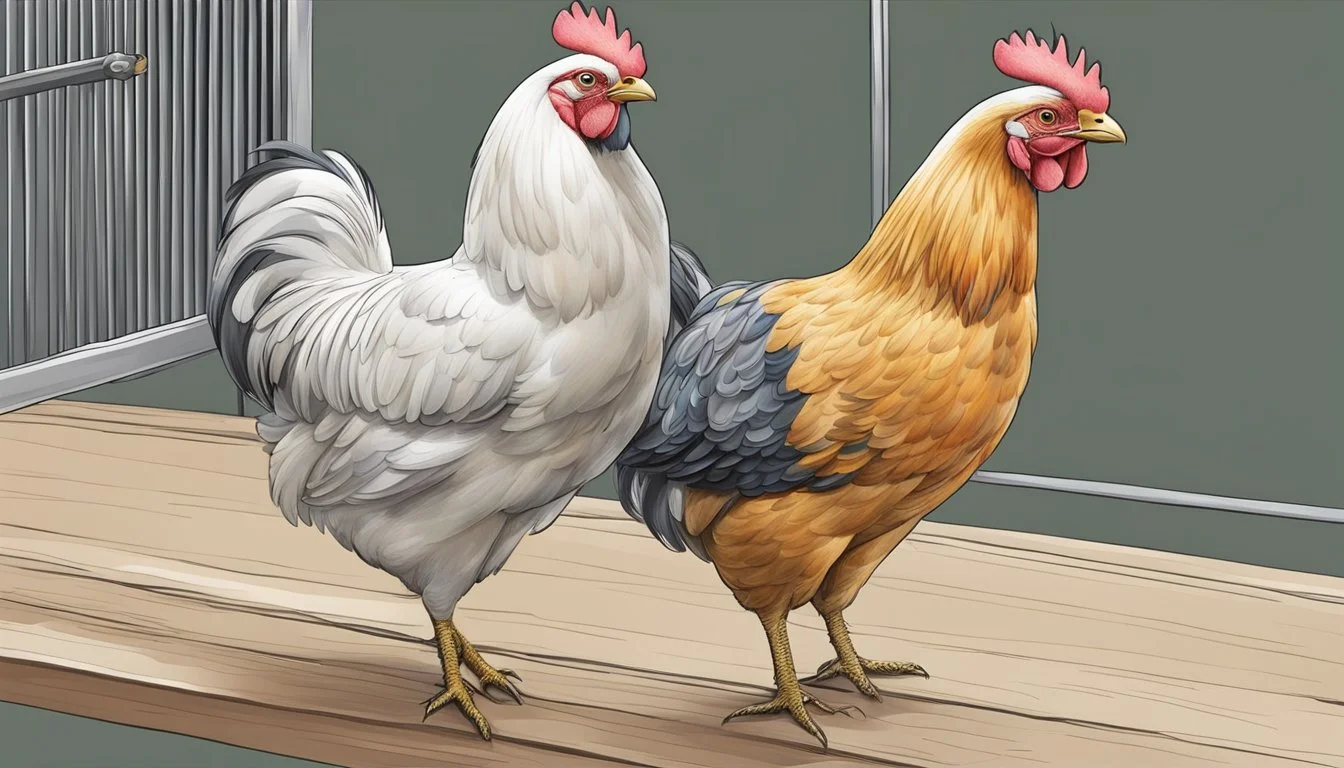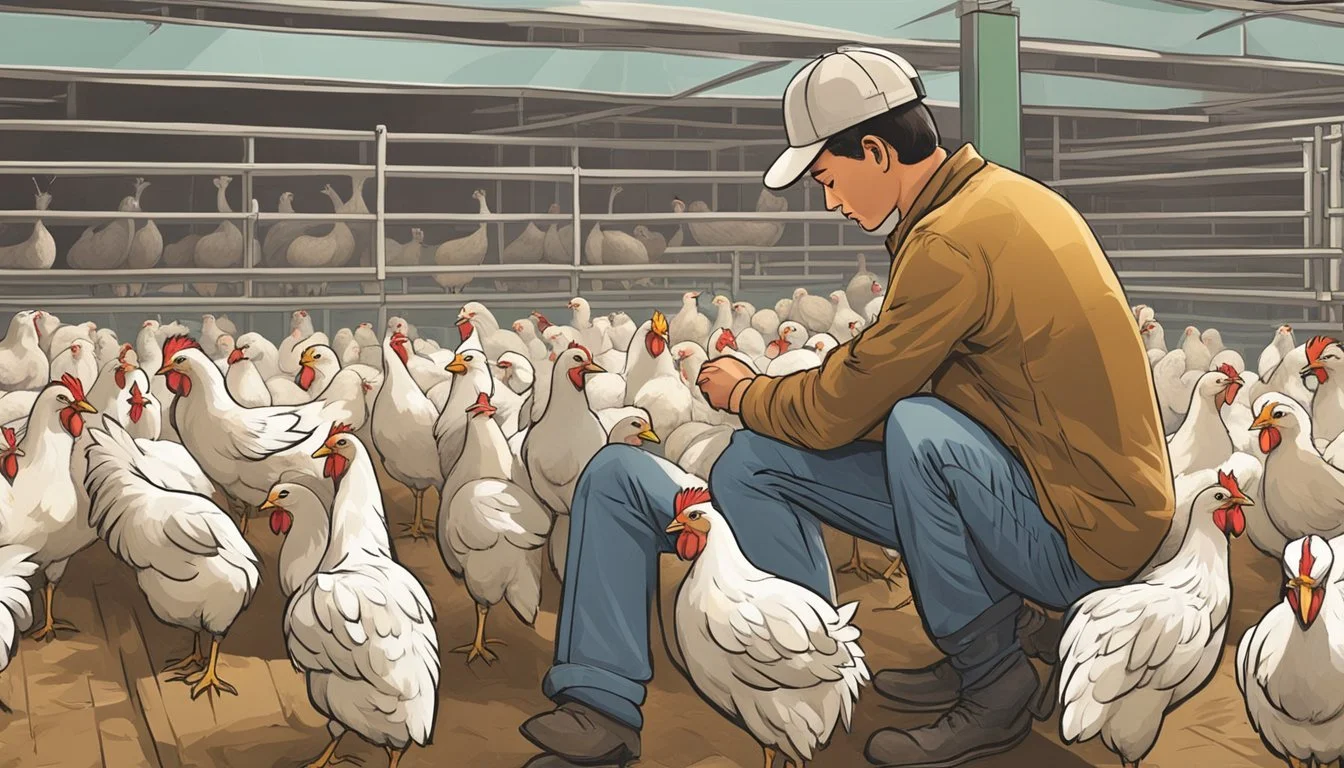How do I Prepare My Flock for a Poultry Show?
Essential Tips for a Winning Edge
Preparing a flock for a poultry show involves meticulous grooming and care to ensure that the chickens presented are in peak condition. Exhibitors need to start early, paying close attention to their flock's diet, health, and feather condition. A chicken's appearance is paramount in a show; it reflects good breeding, proper care, and the exhibitor's commitment to poultry excellence. Bathing the birds is a common practice, where care is taken to clean the feathers without damaging them, and paying particular attention to areas around the oil gland and vent is crucial.
Understanding the natural life cycle of chickens is also important in the run-up to a show. Breeding and hatching should be aligned with the seasons to present the chickens when they are naturally in their prime. This aligns with most poultry exhibits that typically take place in late autumn or early winter. Moreover, maintaining the flock's health through biosecurity measures such as preventing disease spread by avoiding the sharing of equipment or introducing new birds properly is vital.
When considering which birds to show, it is beneficial to look for specimens that represent the breed standards, which involves scrutinizing physical characteristics and ensuring they exhibit the desired traits. Birds should be well-behaved and manageable, making the experience at the show pleasant for both the chicken and the judge. With the correct preparation, exhibitors can showcase their dedication to poultry keeping and participate successfully in competitive poultry shows.
Understanding Poultry Shows
A poultry show is an event where enthusiasts and breeders display their finest poultry to be judged against a standard. These gatherings are significant for both the poultry industry and individual hobbyists who take pride in raising show-quality birds. Often held seasonally, they align with the birds' natural life cycles.
At these shows, one may witness various breeds of chickens, ducks, geese, and other fowl, meticulously groomed and presented. It's an arena where 4-H clubs and owners from livestock backgrounds bring their best specimens. The purpose is not just to win ribbons, but to share knowledge, learn, and uphold breeding standards.
Entries are classified into different categories such as:
Large fowl
Bantams
Waterfowl
Turkeys
Pigeons
Judges evaluate the birds based on criteria such as:
Conformance to breed standards
Overall health and vigor
Quality of feathers
Posture and demeanor
For those in 4-H, participation in a poultry show is a pivotal experience. It engages youth in animal husbandry and public speaking, fostering responsibility and leadership. Preparing show birds is meticulous, requiring a keen understanding of grooming, feeding, and handling.
In summary, poultry shows are a confluence of passion, education, and competition. They represent a crucial aspect of agricultural heritage, where breeders and hobbyists alike display the culmination of their hard work and dedication to raising exceptional livestock.
Selecting Birds for Show
When preparing for a poultry show, selecting the right candidates is pivotal. The chosen birds must not only meet the strict health and breed standards but also be at the appropriate age and maturity to compete.
Evaluating Health and Breed Standards
Healthy birds are essential for showing, as they reflect the quality and care of your flock. One must thoroughly inspect each candidate, including hens, pullets, cocks, and cockerels, for signs of vitality such as bright eyes, clean feathers, and active behavior. The bird's physical condition should align with the American Poultry Association's standards, including weight and feather quality. Bantams and other show chickens must be the epitome of their breed, exhibiting the characteristics that judges look for such as proper coloration, body shape, and size.
Considering Age and Maturity
The age and maturity of the bird play a crucial role in their performance at the show. Breeders often distinguish between young birds, such as pullets and cockerels, and older ones, such as hens and cocks. For example, a young bantam cocket might not have fully developed its plumage or body type to the extent of an older cock, making it less suitable for certain categories or standards expected at the show. Optimal age and maturity not only contribute to the physical representation of the breed but also influence the bird's composure and behavior during the event.
Health and Parasite Management
Before showcasing poultry, it’s essential to ensure the flock is in peak health, free from parasites, and showing no signs of illness or injury. Vigilant management and treatment of issues such as mites, provision of fresh water, and handling of broken feathers are crucial to the success of the show birds.
Preventing and Treating Mites
Mites are tiny ectoparasites that can cause significant health issues for poultry. To prevent mite infestations, one should regularly inspect the flock for signs of these pests, particularly around the vent and under the wings. The coop should be kept clean with proper biosecurity measures in place. For treatment, dusting the birds with an approved mite powder can eliminate current infestations. Regular applications according to the product instructions are necessary to keep these parasites at bay. Keeping the birds’ environment clean is also essential, so changing bedding frequently and using mite repellents designed for poultry can help maintain a mite-free flock.
Monitoring for Illness and Injuries
Close and frequent observation of each bird is needed to swiftly identify and treat any illnesses or injuries. One should look out for lethargy, changes in eating habits, abnormal droppings, or signs of respiratory distress. Fresh water should be available at all times to help maintain good health and facilitate recovery when birds are under the weather. Handling and examining the poultry also offers the opportunity to check and fix broken feathers, which can affect the bird’s appearance at the show. If broken feathers or other physical injuries are found, they should be addressed promptly to ensure the bird’s well-being and to maintain its show-ready condition.
Nutrition and Conditioning
Proper nutrition and conditioning are fundamental for preparing poultry for a show. These factors ensure the birds are at their healthiest and best in terms of physical appearance and performance.
Feeding for Optimal Health
Feeding a balanced diet is crucial for the overall health and plumage of show poultry. The diet should be high in protein to promote feather growth and include essential vitamins and minerals for immune system support. Offer a variety of grains, pellets, and greens to ensure a comprehensive nutrient intake, and consider incorporating a vitamin supplement to cover any dietary gaps.
Grains: Whole grains such as corn, wheat, and oats.
Pellets: High-quality commercial feed formulated for show poultry.
Greens: Leafy greens like lettuce and spinach to provide additional vitamins.
It's imperative to start this nutrition regimen well before the show to allow the birds' conditions to peak at the right time.
Conditioning for Peak Performance
Conditioning involves both physical and mental preparation of the poultry. Physical conditioning helps enhance the bird's muscle tone and posture, essential for showmanship. Handlers can encourage this by providing space for exercise and regular handling to accustom the birds to being presented.
Exercise: Set up a safe, enclosed space for the birds to walk, stretch, and flap their wings.
Handling: Regular, gentle handling to reduce stress during the actual show.
Mental conditioning includes familiarizing the birds with the show environment, such as being in a cage or being around unfamiliar noises and people, which can be simulated at home to reduce stress on the show day. They should be at their best when it comes to physical health and temperament: calm, alert, and responsive.
Grooming and Presentation
Proper grooming and presentation are essential for preparing a flock for a poultry show. These steps not only enhance the physical appearance of the chickens but also reflect the care and effort invested in the flock.
Bathing Procedures
Before a chicken steps foot in the show ring, it should undergo a thorough bathing process. Start with a pre-soak to loosen dirt, followed by a gentle, yet efficient wash using poultry-friendly soap. It's vital to meticulously rinse the soap out before moving to the final vinegar rinse, which can be made from a mixture of water and vinegar to ensure the removal of any soap residue and to add shine to the feathers.
Plumage Care
After bathing, the chicken's plumage requires attentive grooming to keep it looking its best. Drying should be done gently, using towels or a hairdryer on a cool setting, to prevent damage. Regular brushing of the feathers helps remove any remaining dirt and aligns the plumage, giving it a clean and lustrous appearance. Inspection of the plumage for broken feathers or parasites is crucial since these can mar the chicken's appearance and affect its chances at the show.
Beak and Claw Preparation
The preparation of the beak and claws is just as significant. They must be well-trimmed, clean, and in good shape, which demonstrates the overall health and grooming of the chicken. While trimming, care should be taken not to cause injury or distress. Finish off by cleaning the beak and claws with a soft brush to remove any lingering dirt. This attention to detail can often make a substantial difference in a judged event.
Training for Show Behavior
Training your flock for a poultry show requires patience and consistency. Focus on acclimating the birds to handling and introducing them to show cages to ensure they display calm, confident behavior during the event.
Handling and Socialization
Begin socializing chickens at an early age to ensure they're comfortable with human interaction. Gradual and gentle handling is key. Present the chickens with positive experiences while being held and inspected. Regular handling encourages the birds to become calm and tractable, qualities that are essential for a show. Chickens should be accustomed to typical examination techniques such as wing spreading and feet checking.
Cage Training
Familiarity with show cages prevents stress on the day of the show. Introduce the birds to a cage similar to show cages they will stay in during the event. Start by placing them in the cage for short periods and gradually increasing the duration. The goal is for the chicken to remain calm and settled within the confines of the cage, as this will likely be their temporary home during the show. Ensure the cage is comfortable and secure to foster a sense of safety for the chickens.
Preparing for Transport
When showing poultry, it’s crucial to ensure safe and comfortable transportation for your flock. Proper carriers and familiarization can significantly reduce the stress on your birds during the journey.
Selecting the Right Carrier
Selecting an appropriate carrier is essential for the safety and comfort of chickens during transit. Rabbit carriers can be suitable for smaller birds due to their compact size and secure doors. However, for larger breeds, sturdy crates or cages with sufficient ventilation are preferable. It's imperative to avoid overcrowding; each bird should have enough room to stand and turn around. Cardboard boxes may be used for very short trips but are generally not recommended as they can compromise ventilation and are not as secure as other options.
Acclimatization to Carriers
To minimize stress, it’s advisable to acclimatize your chickens to their carriers well before the show. Begin this process by placing your birds in the carriers for short periods each day, gradually increasing the time. Make sure these sessions are conducted in a controlled environment to prevent escaping. Familiarity with the space can ease a bird’s anxiety, making the actual transportation process smoother.
Final Pre-Show Checklist
When preparing for a poultry show, a final pre-show checklist is essential. This checklist will ensure that exhibitors have all necessary items packed and are ready with the essentials for the show day.
Packing the Show Kit
A well-prepared show kit should contain all the grooming supplies required for the final touch-ups before the birds are displayed. It is important to pack:
Cleaning supplies such as soaps and shampoos specifically designed for poultry
Towels for air drying the birds after washing
Brushes and combs for feather alignment
Polish for brightening the birds' legs and beak if allowed by show rules
Items should be organized and packed in a way that they are easily accessible during the show.
Overview of Show Day Essentials
On the show day, essential items must be at hand for a smooth experience. These include:
The show kit, complete with grooming supplies
Fresh water and feed for the birds
Cages or carriers for safe transport
Registration forms and show schedule
A checklist of birds being shown, to help with final verification before judging
With these items ready, exhibitors can enter the show ring with confidence, focusing on presenting their poultry at its best.
Post-Show Care and Feedback
After a poultry show, attention to the flock’s health is paramount, and reflecting on the judges' feedback can guide improvements for future competitions.
Post-Competition Health Monitoring
It’s essential to provide the chickens with fresh water immediately after the event, especially if they are returning in autumn or winter when dehydration and stress can be exacerbated by temperature changes. Health monitoring in the days following the show should include checking for any signs of respiratory issues or parasites that they may have been exposed to. Ensuring that chicks that have been part of the show are not displaying any adverse effects from the stress of the event is equally important.
Reviewing Judges' Comments
Analysis of the judges' comments should be done systematically. Look for patterns or repeated critiques within the feedback:
Feather condition: Were there any remarks about the cleanliness, sheen, or overall quality of the feathers?
Behavior: Did the judges note how the chickens behaved? Were they calm and well-handled, or did they express concerns about temperament?
Use this analysis to implement targeted changes in grooming and handling practices before the next show.








